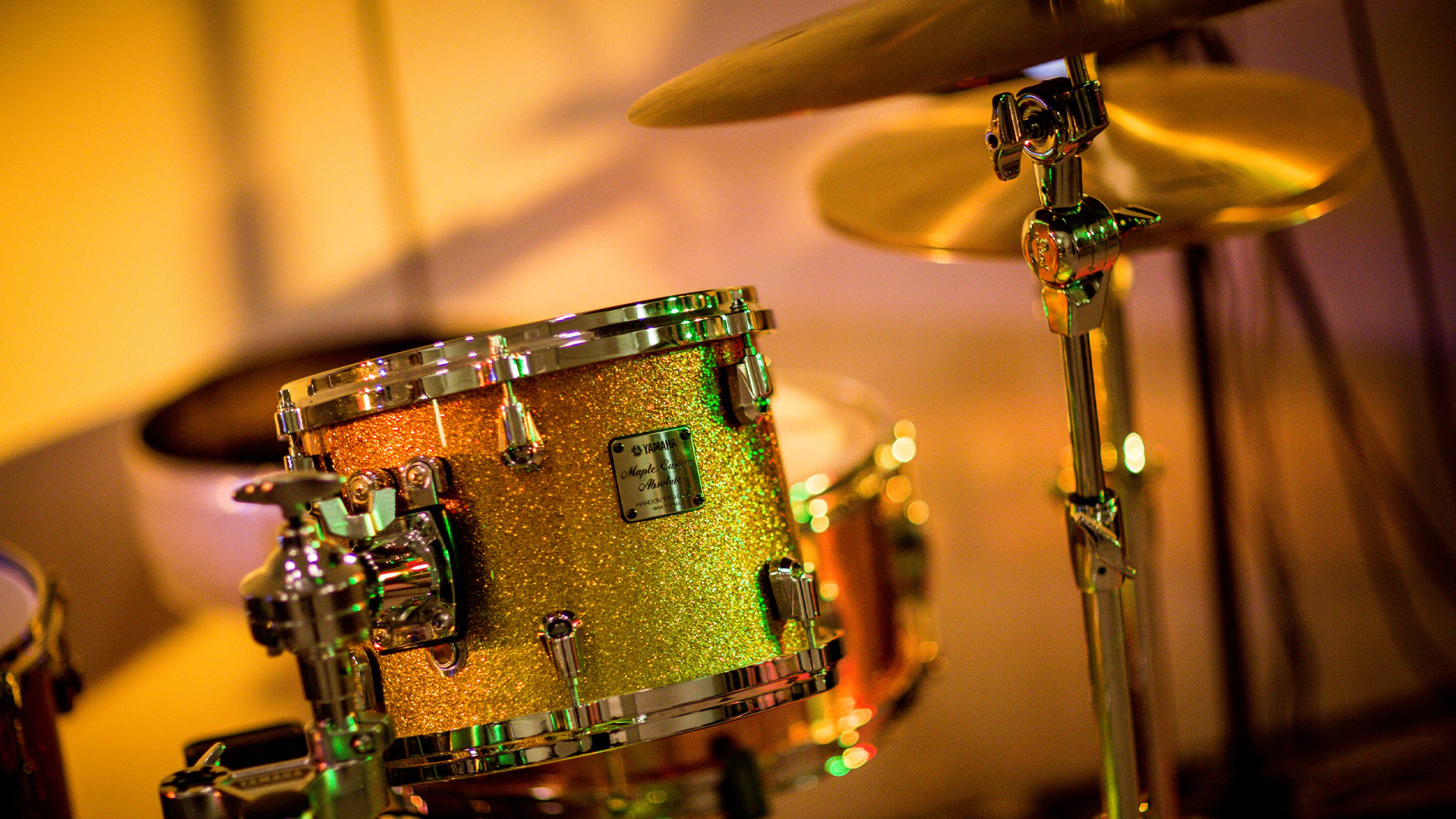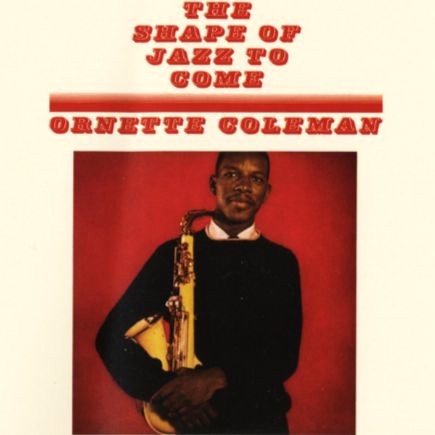Billy Higgins, le battement vital du free jazz et du hard bop
Billy Higgins demeure l’un des batteurs les plus influents de l’histoire du jazz moderne, à la croisée du free jazz et du hard bop. Né à Los Angeles, dans le quartier afro-américain de Watts, il grandit dans un environnement musical foisonnant qui nourrit son talent précoce. Dès l’âge de douze ans, il joue déjà dans des orchestres de rhythm and blues, aux côtés du chanteur et pianiste Amos Milburn, avant de s’aventurer sur les routes avec le groupe Jazz Messiahs dirigé par le cornettiste Don Cherry, puis avec George Newman.
La rencontre décisive survient en 1958 avec Ornette Coleman, pionnier du free jazz. Higgins devient son batteur attitré durant deux années marquées par une effervescence créative exceptionnelle. Ensemble, ils enregistrent pour le label Atlantic des albums fondateurs du free jazz, dont The Shape of Jazz to Come (1959), véritable manifeste de la liberté musicale et catalyseur d’un nouveau langage. Son jeu, souple et inventif, accompagne l’audace harmonique de Coleman, tout en posant des repères rythmiques solides dans un contexte où les conventions s’effritaient.
Au cours des années 1960, Higgins s’impose comme l’un des batteurs phares du label Blue Note. Sa signature rythmique accompagne des figures majeures du jazz: Donald Byrd, Dexter Gordon, Joe Henderson, Milt Jackson, Lee Morgan, David Murray, Art Pepper ou encore Sonny Rollins. Il démontre une étonnante capacité d’adaptation, allant du swing lumineux du hard bop aux explorations plus abstraites du free. En 1960, sa prestation avec Thelonious Monk à San Francisco, immortalisée dans l’album At the Blackhawk (Riverside), confirme sa stature de musicien recherché par tous les grands orchestres et les studios, rivalisant ainsi avec Shelly Manne, maître de la côte Ouest.
Prolifique, Higgins participa à plus de 700 enregistrements, explorant également le rock et la funk. Son style, à la fois direct et nuancé, évoquait par moments l’approche novatrice de Kenny Clarke, tout en affirmant une identité profondément personnelle. En 1989, il cofonde à Los Angeles The World Stage, un lieu de création et de transmission destiné à encourager l’émergence de jeunes talents du jazz.
Billy Higgins, el latido vital del free jazz y del hard bop
Billy Higgins permanece como uno de los bateristas más influyentes de la historia del jazz moderno, en la encrucijada entre el free jazz y el hard bop. Nacido en Los Ángeles, en el barrio afroamericano de Watts, creció en un entorno musical vibrante que alimentó su precoz talento. A los doce años ya tocaba en orquestas de rhythm and blues junto al cantante y pianista Amos Milburn, antes de lanzarse a la carretera con el grupo Jazz Messiahs dirigido por el corneta Don Cherry, y posteriormente con George Newman.
El encuentro decisivo se produjo en 1958 con Ornette Coleman, pionero del free jazz. Higgins se convirtió en su baterista habitual durante dos años de intensa efervescencia creativa. Juntos grabaron para el sello Atlantic discos fundacionales del free jazz, entre ellos The Shape of Jazz to Come (1959), verdadero manifiesto de libertad musical y catalizador de un nuevo lenguaje. Su toque, flexible e inventivo, acompañaba la audacia armónica de Coleman, al tiempo que establecía referencias rítmicas sólidas en un contexto donde se desmoronaban las convenciones.
Durante la década de 1960, Higgins se consolidó como uno de los bateristas emblemáticos del sello Blue Note. Su huella rítmica acompañó a figuras mayores del jazz: Donald Byrd, Dexter Gordon, Joe Henderson, Milt Jackson, Lee Morgan, David Murray, Art Pepper y Sonny Rollins. Mostró una sorprendente capacidad de adaptación, pasando del swing luminoso del hard bop a las exploraciones más abstractas del free. En 1960, su actuación con Thelonious Monk en San Francisco, inmortalizada en el álbum At the Blackhawk (Riverside), confirmó su estatura de músico solicitado por grandes orquestas y estudios, rivalizando con Shelly Manne, maestro de la costa oeste.
Prolífico, Higgins participó en más de 700 grabaciones, explorando también el rock y el funk. Su estilo, directo y matizado a la vez, evocaba por momentos el enfoque innovador de Kenny Clarke, aunque afirmando siempre una identidad profundamente personal. En 1989 cofundó en Los Ángeles The World Stage, un espacio de creación y transmisión destinado a estimular la aparición de nuevos talentos del jazz.
Billy Higgins, il battito vitale del free jazz e dell’hard bop
Billy Higgins rimane uno dei batteristi più influenti della storia del jazz moderno, al crocevia tra free jazz e hard bop. Nato a Los Angeles, nel quartiere afroamericano di Watts, crebbe in un ambiente musicale fervido che alimentò il suo precoce talento. A dodici anni già suonava nelle orchestre di rhythm and blues accanto al cantante e pianista Amos Milburn, prima di intraprendere tournée con il gruppo Jazz Messiahs diretto dal cornettista Don Cherry e successivamente con George Newman.
L’incontro decisivo avvenne nel 1958 con Ornette Coleman, pioniere del free jazz. Higgins divenne il suo batterista di fiducia per due anni di straordinaria effervescenza creativa. Insieme incisero per l’etichetta Atlantic album fondamentali del free jazz, tra cui The Shape of Jazz to Come (1959), autentico manifesto di libertà musicale e catalizzatore di un nuovo linguaggio. Il suo drumming, flessibile e inventivo, accompagnava l’audacia armonica di Coleman, fornendo al tempo stesso punti di riferimento ritmici solidi in un contesto di rottura delle convenzioni.
Negli anni ’60 Higgins si affermò come uno dei batteristi di punta dell’etichetta Blue Note. La sua impronta ritmica accompagnò figure di primo piano del jazz: Donald Byrd, Dexter Gordon, Joe Henderson, Milt Jackson, Lee Morgan, David Murray, Art Pepper e Sonny Rollins. Dimostrò una sorprendente capacità di adattamento, passando dallo swing luminoso dell’hard bop alle esplorazioni più astratte del free. Nel 1960, la sua esibizione con Thelonious Monk a San Francisco, immortalata nell’album At the Blackhawk (Riverside), confermò la sua statura di musicista richiesto dalle grandi orchestre e dagli studi, in competizione con Shelly Manne, maestro della West Coast.
Prolifico, Higgins partecipò a più di 700 registrazioni, esplorando anche il rock e il funk. Il suo stile, insieme diretto e sfumato, evocava a tratti l’approccio innovativo di Kenny Clarke, pur affermando sempre un’identità profondamente personale. Nel 1989 cofondò a Los Angeles The World Stage, uno spazio di creazione e trasmissione destinato a favorire l’emergere di giovani talenti del jazz.
Billy Higgins, the vital heartbeat of free jazz and hard bop
Billy Higgins stands as one of the most influential drummers in the history of modern jazz, at the crossroads of free jazz and hard bop. Born in Los Angeles, in the African American neighborhood of Watts, he grew up in a vibrant musical environment that nurtured his early talent. By the age of twelve, he was already playing in rhythm and blues bands alongside singer and pianist Amos Milburn, before hitting the road with the Jazz Messiahs led by cornetist Don Cherry, and later with George Newman.
The turning point came in 1958 with Ornette Coleman, a pioneer of free jazz. Higgins became his drummer of choice for two years of exceptional creative energy. Together, they recorded for the Atlantic label some of the defining albums of free jazz, including The Shape of Jazz to Come (1959), a true manifesto of musical freedom and a catalyst for a new language. His supple and inventive playing matched Coleman’s harmonic daring, while laying down solid rhythmic landmarks in a context where conventions were being dismantled.
Throughout the 1960s, Higgins established himself as one of the key drummers for the Blue Note label. His rhythmic signature supported major jazz figures: Donald Byrd, Dexter Gordon, Joe Henderson, Milt Jackson, Lee Morgan, David Murray, Art Pepper, and Sonny Rollins. He displayed an extraordinary adaptability, moving from the luminous swing of hard bop to the more abstract explorations of free jazz. In 1960, his performance with Thelonious Monk in San Francisco, captured on the album At the Blackhawk (Riverside), confirmed his status as a musician sought after by leading orchestras and studios, rivaling Shelly Manne, the master of the West Coast.
Prolific by any measure, Higgins took part in more than 700 recordings, also exploring rock and funk. His style, at once direct and nuanced, at times evoked the innovative approach of Kenny Clarke, while always asserting a deeply personal identity. In 1989, he co-founded The World Stage in Los Angeles, a space for creation and mentorship aimed at fostering the emergence of new jazz talents.

Autres articles – Otros artículos – Altri articoli
Donald BYRD (09.12.1932–04.02.2013)
Kenny CLARKE (09.01.1914–26.01.1985)
Ornette COLEMAN (09.03.1930–11.06.2015)
Dexter GORDON (27.02.1923–25.04.1990)
Joe HENDERSON (24.04.1937–30.06.2001)
Milt JACKSON (01.01.1923–09.10.1999)
Shelly MANNE (11.06.1920–26.09.1984)
Thelonious MONK (10.10.1917–17.02.1982)
Lee MORGAN (10.07.1938–19.02.1972)


